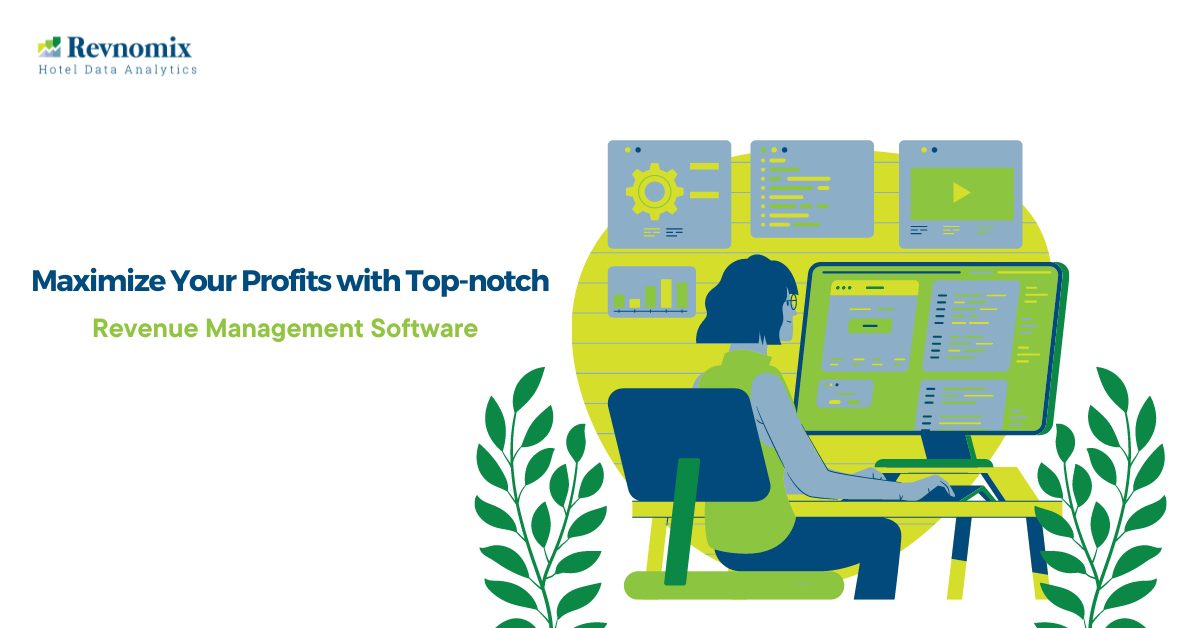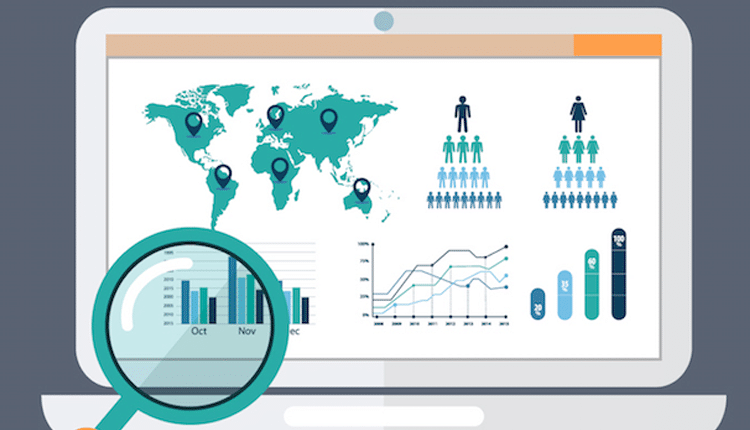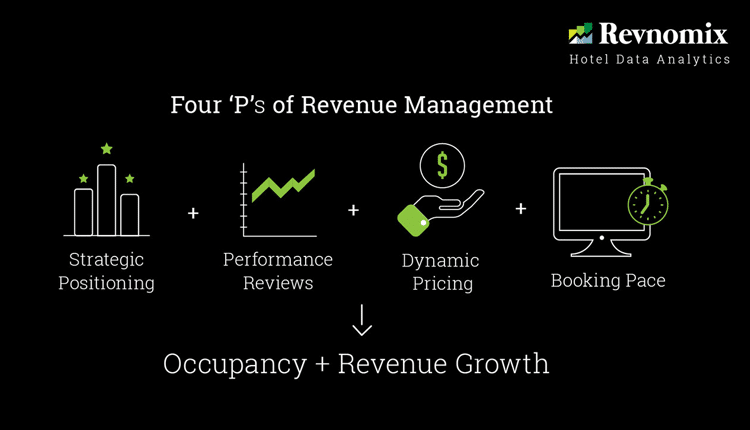Are you looking to take your business to the next level and maximize your profits? Look no further than top-notch revenue management software. In today’s competitive market, effective revenue management is essential for businesses striving to succeed. By utilizing the right software, you can gain valuable insights into your pricing strategies, inventory management, and sales forecasting, allowing you to make informed decisions to optimize revenue.
With the ever-increasing complexity of consumer behavior and market trends, manual revenue management processes are simply inadequate. Revenue management software empowers businesses to automate and streamline these processes, saving time and improving accuracy. Whether you’re operating in the hospitality, retail, or service industry, revenue management software can provide you with a comprehensive, data-driven approach to increase your profitability.
By implementing revenue management software, you can improve your pricing, identify new revenue opportunities, and enhance customer satisfaction. Stay one step ahead of your competitors and unlock the full potential of your business with top-notch revenue management software. Don’t miss out on the opportunity to maximize your profits and propel your business to new heights.
Benefits of using revenue management software
Revenue management software offers numerous benefits that can positively impact your business’s profitability. Let’s explore some of the key advantages:
1. Data-driven decision-making: Revenue management software provides you with accurate and real-time data, allowing you to make informed decisions based on market trends, customer behavior, and competitor analysis. This data-driven approach enables you to optimize pricing, identify demand patterns, and allocate resources effectively.
2. Pricing optimization: One of the most significant benefits of revenue management software is its ability to optimize pricing strategies. With advanced algorithms and predictive analytics, the software can analyze market conditions, competitor pricing, and historical data to determine the optimal price for your products or services. By dynamically adjusting prices based on demand and availability, you can maximize revenue and profitability.
3. Improved inventory management: Effective inventory management is crucial for businesses to avoid stockouts and overstock situations. Revenue management software helps you optimize inventory levels by analyzing demand patterns and sales forecasts. With accurate inventory data at your fingertips, you can ensure the right products are available at the right time, reducing costs and improving customer satisfaction.
4. Enhanced sales forecasting: Accurate sales forecasting is vital for businesses to plan and allocate resources effectively. Revenue management software utilizes historical data, market trends, and predictive analytics to generate accurate sales forecasts. By having a clear understanding of future demand, you can optimize staffing, production, and inventory levels, leading to increased efficiency and profitability.
5. Competitive advantage: In today’s fast-paced and competitive market, having a competitive edge is crucial for business success. Revenue management software provides you with valuable insights into your competitors’ pricing, promotions, and market positioning. By leveraging this information, you can adjust your strategies to outperform your competitors, attract more customers, and increase market share.
Key features to look for in revenue management software
When choosing revenue management software for your business, it’s essential to consider the key features that will best meet your needs. Here are some important features to look for:
1. Pricing optimization: The software should have advanced algorithms and analytics capabilities to determine optimal pricing based on market conditions, competitor pricing, and demand patterns. It should also allow for dynamic pricing adjustments to maximize revenue.
2. Demand forecasting: Accurate demand forecasting is crucial for effective revenue management. The software should provide robust forecasting capabilities, taking into account historical data, market trends, and external factors that may impact demand.
3. Inventory management: Look for software that offers inventory management features, such as inventory tracking, stock level optimization, and automated replenishment. This will help you avoid stockouts and overstock situations, improving customer satisfaction and reducing costs.
4. Reporting and analytics: The software should provide comprehensive reporting and analytics capabilities, allowing you to monitor key performance indicators, track revenue trends, and identify areas for improvement. Customizable dashboards and real-time data updates are valuable features to consider.
5. Integration capabilities: Ensure that the software can seamlessly integrate with your existing systems, such as point-of-sale, e-commerce platforms, and customer relationship management (CRM) software. This will enable data synchronization and streamline your revenue management processes.
6. Scalability: Consider the scalability of the software, especially if you anticipate future business growth. The software should be able to handle increasing data volumes and accommodate additional users without compromising performance.
7. User-friendly interface: A user-friendly interface is essential for easy adoption and efficient use of the software. Look for intuitive navigation, customizable workflows, and a visually appealing interface that enhances user experience.
How revenue management software can optimize pricing strategies
1. Dynamic Pricing
One of the key features of revenue management software is its ability to optimize pricing strategies through dynamic pricing. Traditional static pricing involves setting fixed prices for products or services, regardless of market demand or other external factors. This approach often leads to missed revenue opportunities and potential losses.
RMS, on the other hand, allows businesses to implement dynamic pricing based on real-time market data. By analyzing factors such as consumer demand, competitor prices, and market trends, the software can adjust prices accordingly. This ensures that businesses can maximize revenue by charging higher prices during peak demand periods and offering discounts during off-peak times to attract more customers.
Dynamic pricing not only helps businesses generate more revenue but also allows them to stay competitive in the market. By constantly adjusting prices based on demand and competition, businesses can optimize their pricing strategies to attract customers and increase profits.
2. Price Optimization
In addition to dynamic pricing, revenue management software also enables businesses to optimize their prices based on various factors. The software can analyze historical sales data, customer preferences, and market trends to identify the optimal price points for different products or services.
By setting the right prices, businesses can strike a balance between maximizing revenue and maintaining customer satisfaction. Pricing products too high may lead to lower sales volume, while pricing them too low may result in missed revenue opportunities. RMS takes the guesswork out of pricing decisions by providing data-driven insights that help businesses find the sweet spot.
Moreover, revenue management software can also assist businesses in implementing price elasticity strategies. By analyzing how changes in price affect demand, businesses can identify the price points that maximize revenue. This allows them to adjust prices accordingly and capture additional profits.
3. Demand Forecasting
Accurate demand forecasting is crucial for businesses to optimize their pricing strategies. RMS can predict future demand based on historical data, seasonality patterns, and market trends. By understanding customer demand in advance, businesses can adjust their pricing strategies and inventory levels accordingly.
For example, during periods of high demand, businesses can increase prices to maximize revenue and prevent stockouts. On the other hand, during periods of low demand, businesses can offer discounts or promotions to stimulate sales and minimize inventory holding costs.
RMS goes beyond simple forecasting by utilizing advanced algorithms and machine learning techniques. These tools can analyze vast amounts of data and identify patterns that humans may miss. As a result, businesses can make more accurate predictions and optimize their pricing strategies to maximize profitability.
Read More – 6 Useful Reports by Revenue Management Software for Hotels
Conclusion: The future of revenue management software and its impact on business profitability
Revenue management software has become an indispensable tool for businesses seeking to maximize their profits. By automating and streamlining revenue management processes, businesses can optimize pricing strategies, identify new revenue opportunities, and enhance customer satisfaction.
As technology continues to advance, revenue management software is expected to become even more sophisticated. Predictive analytics, artificial intelligence, and machine learning capabilities will enable businesses to make data-driven decisions in real-time, further improving revenue optimization.
In conclusion, RMS is a game-changer for businesses looking to stay competitive and maximize their profits. By utilizing this top-notch software, businesses can unlock their full revenue potential, make informed pricing decisions, and stay one step ahead of their competitors. Don’t miss out on the opportunity to take your business to new heights with revenue management software. Invest in the right solution today and reap the benefits tomorrow.







